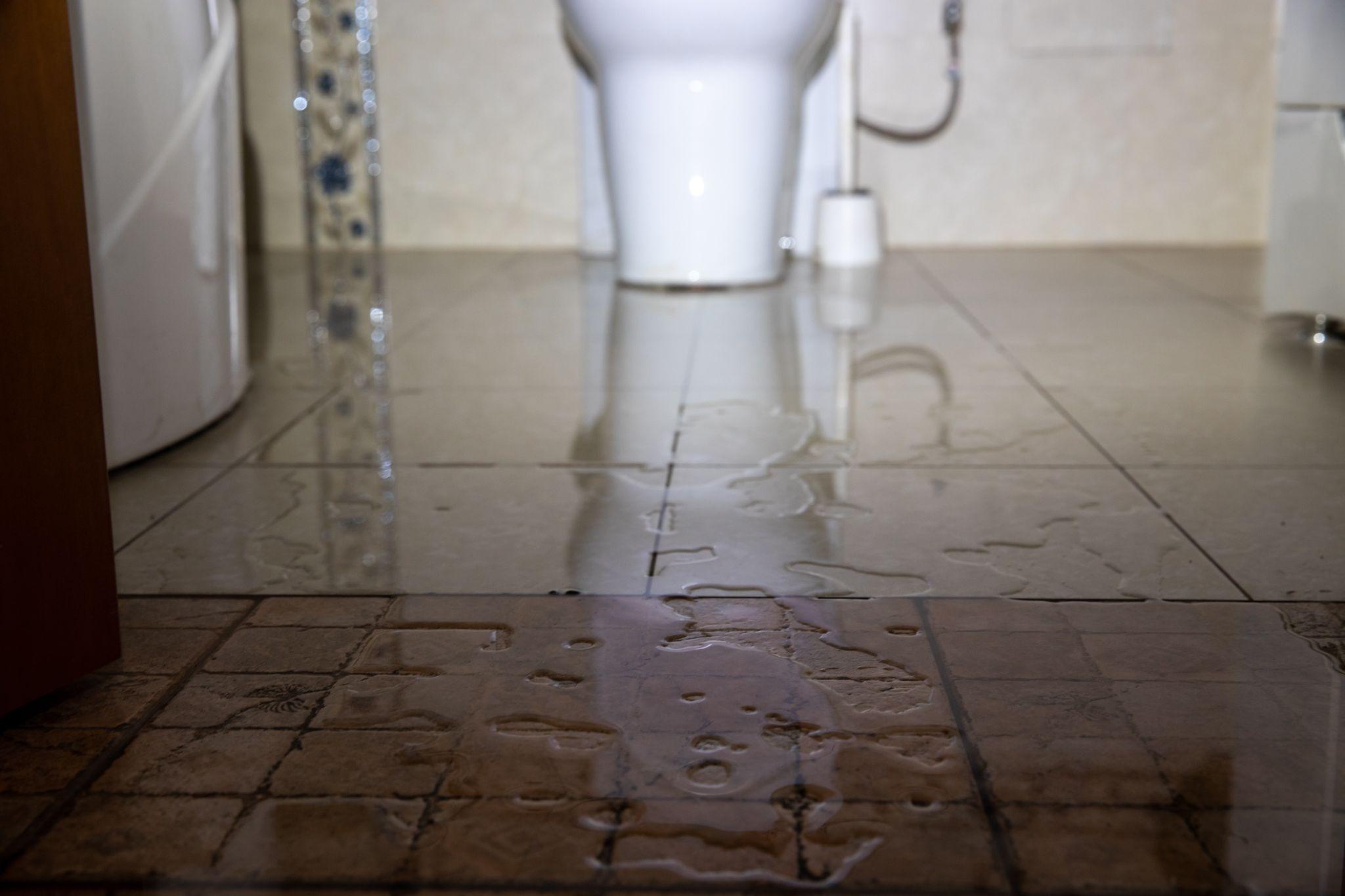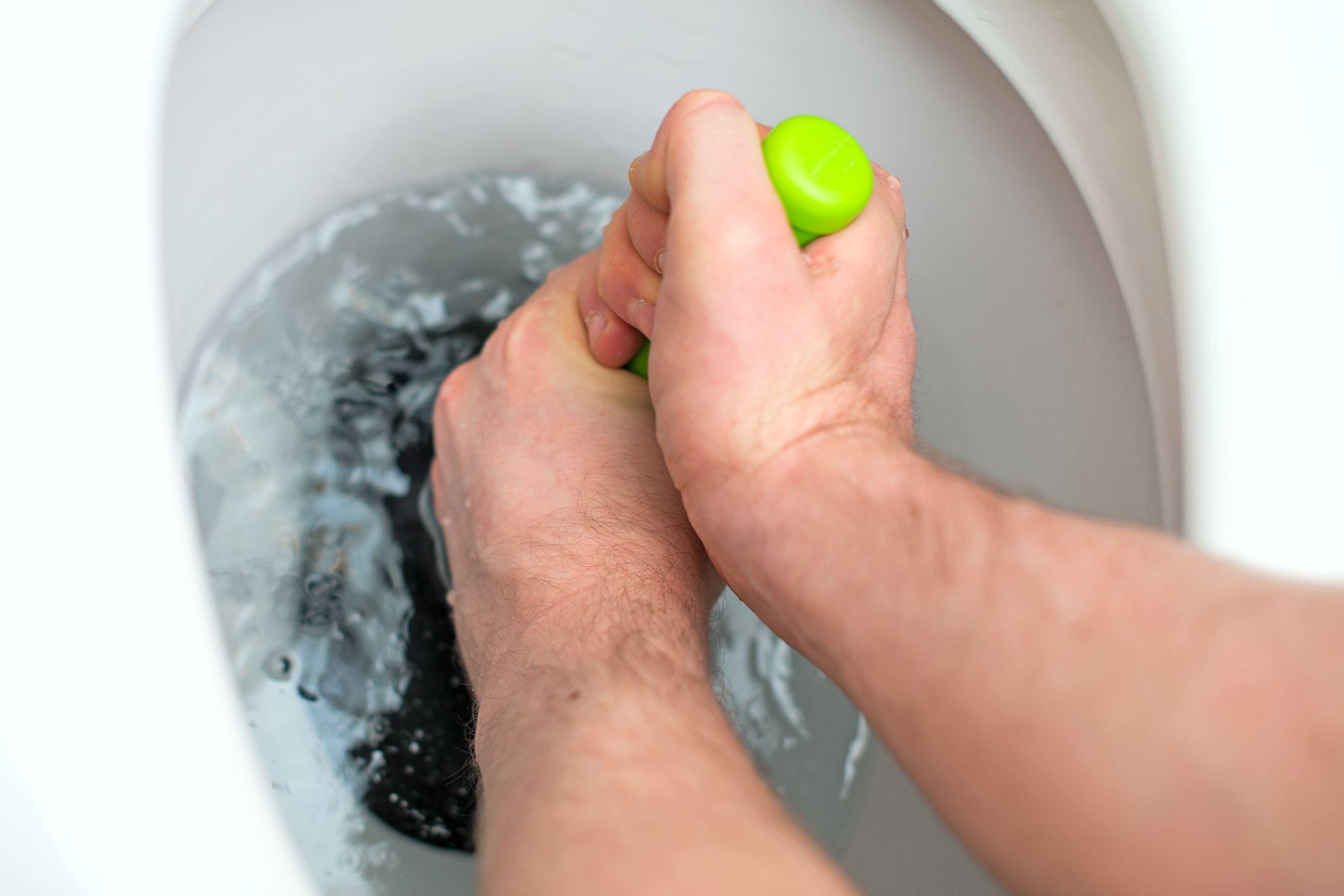What to Do if Your Toilet Overflows

We have all experienced an overflowing toilet at some point. We flush the toilet, and the toilet water just keeps rising and rising until it is overflowing over the toilet bowl and onto the floor.
At this point, panic sets in because all that wastewater is flooding onto the bathroom floor. If we don’t stop the water, it could create an even bigger mess. The best thing to do is take a deep breath and use the following step-by-step instructions.
Step 1: Contain the Water
You need to contain the water and stop it from flowing across the bathroom floor. Grab some towels and put them down to contain the water around the toilet as best as possible.
Do not waste time getting paper towels or rags, as too much water could overflow onto the floor. You can wash the towels with bleach later, so you just need to grab whatever towels you can as quickly as you can.
Step 2: Shut Off the Water
Once the water is contained, you need to shut off the water if it is still overflowing from the toilet. At the base of the toilet in the back, underneath the tank, should be a water shut-off valve. Turn this valve until the water stops running.
Alternatively, you could remove the lid from the toilet tank and push the flapper inside down into the hole to stop the water. Another option is to lift the float fill valve to stop the tank from filling with water. You will need to find something to keep the float fill valve in place.
Step 3: Clean Up the Mess
Now that the water has been shut off, you can start cleaning up the excess water. Gather your cleaning supplies, including:
- Rubber Gloves
- Mop Bucket
- Mop
- Antibacterial Floor Cleaner
You need to first mop up the excess water off the floor. Wring the mop out in between to extract as much water as possible. Empty the mop bucket in the shower or bathtub.
Carefully pick up the towels from the floor and wring those out in the bathtub or shower. Using your mop bucket or another container, transfer the towels to your washing machine so that you can wash them with hot water and bleach.
After all the excess water is cleaned up, mix hot water with the antibacterial floor cleaner and mop the floor. If you don’t have an antibacterial floor cleaner, you can mix the hot water with chlorine bleach to kill bacteria and germs that were in the toilet water.
Step 4: Plunge the Toilet

You need to remove the clog that caused the toilet to overflow in the first place. Do not put chemicals or chemical-based clog removers down your toilet. Instead, use a toilet plunger to remove the toilet clog. Keep plunging until any excess water in the toilet bowl has drained out of the toilet.
Step 5: Place Towels Around the Toilet
As a precaution, place towels around the base of the toilet. Should the clog still be present and water starts backing up, you will at least have towels already in place if needed.
Step 6: Turn the Water Back On
Turn the water back on. If you shut off the water supply, turn the valve until water starts refilling the toilet tank. If you lifted the float fill valve, remove the object you held it up with so the toilet tank refills.
Step 7: Flush the Toilet
Keep your plunger nearby and flush the toilet. If the water level in the toilet bowl starts rising, start plunging to try to unblock the toilet clog. If the clog is too stubborn and the water level is nearing the top of the toilet bowl, shut the water off before it overflows.
If the water flushes down the toilet without any problems, the clog was removed. However, you will want to keep an eye on it for the next several flushes.
What could be causing your toilet to overflow?
Toilet overflow problems can be caused by various things, including:
- Foreign objects that got flushed down the toilet like toys, batteries, and other small objects.
- Flushing items in the toilet you are not supposed to, such as disposable diapers, paper towels, baby wipes, feminine products, etc.
- Sewer and septic tank problems where the water backflows into the house up the toilet drains.
- A broken or damaged sewer line.
- Low water pressure that is insufficient to fully flush the toilet.
- Overfilling the toilet bowl with too much toilet paper.
How do you prevent future overflows?
While certain plumbing problems, like sewer line and septic tank problems, cannot always be avoided, there are other things you can do to limit future toilet overflow problems, including:
- Never flush anything in the toilet that should not be flushed.
- Avoid using too much toilet paper.
- If you have to use a lot of toilet paper, flush the toilet a few times to prevent overfilling it with too much toilet paper.
- Have the toilet drain lines professionally cleaned by a plumber annually.
When should you call a plumber for toilet repairs?

In situations where the toilet continues to overflow after you attempt to plunge it to remove the toilet clog, you will want to call a plumber. There could be a difficult clog or another sewer line or septic tank problem that needs to be fixed to resolve the overflowing toilet problem.
For example, tree roots are notorious for growing into sewer lines and creating clogs. The pressure from the tree roots could also cause the sewer line to crack and break, thus preventing water from draining away.
If you notice strange gurgling sounds when you flush the toilet that comes from another toilet, shower drain, bathtub drain, or kitchen sink drain, this is a common sign of a sewer line problem.
Additionally, you should call your plumber when the flow of water does not stop in between flushes. There could be a problem with the toilet flapper, float fill valve, etc.
For professional toilet drain cleaning, toilet repairs, and sewer line repairs in New Braunfels, Temple, San Antonio, and the Austin Metro Area, please feel free to contact Christianson Air Conditioning & Plumbing at 512-246-5400 today!



Sorry, comments for this entry are closed at this time.